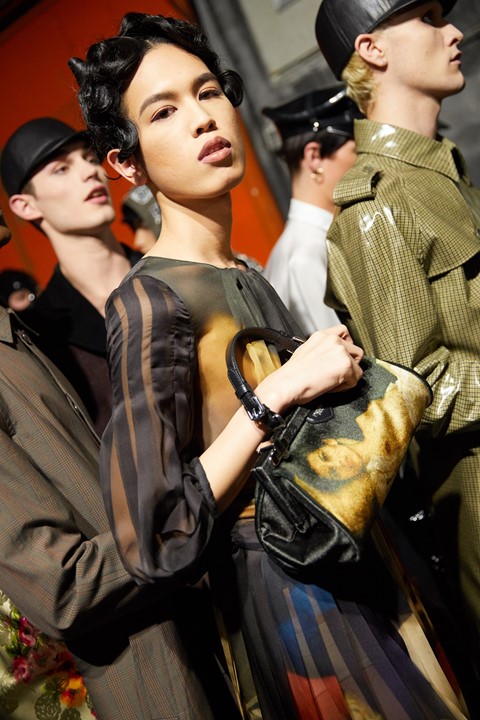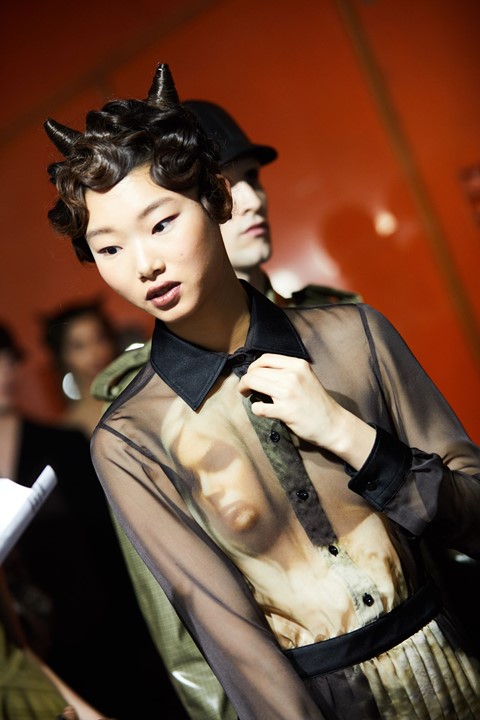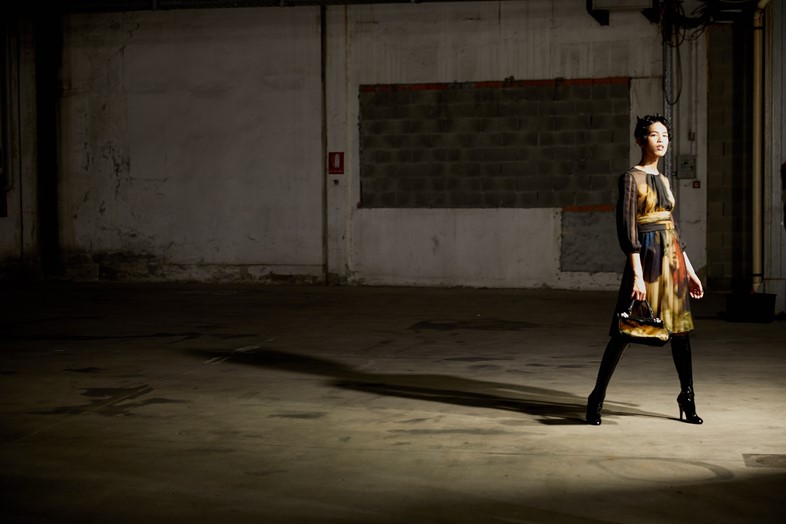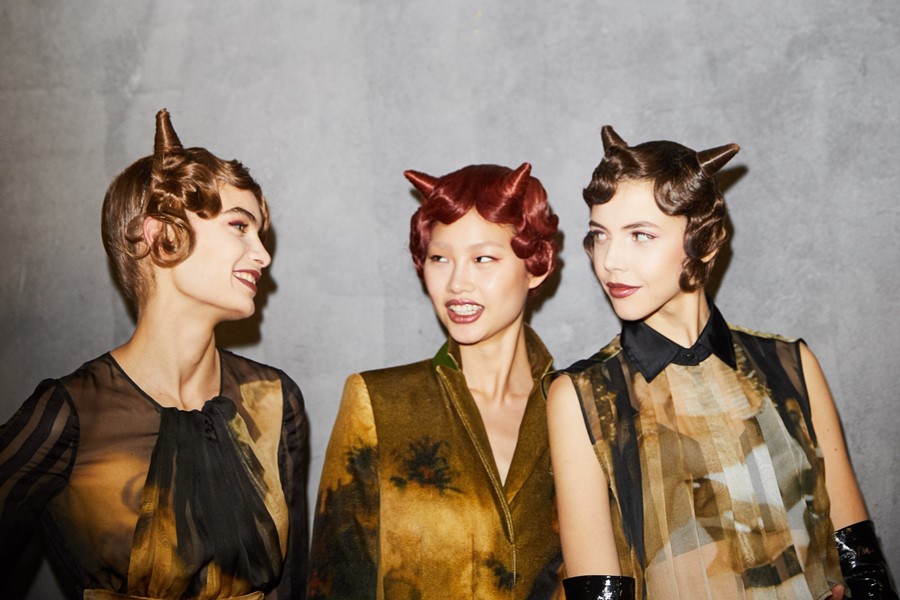Jeremy Scott drew on the lost photographs of Carlo Mollino for Moschino’s kinky Pre-Fall 2018 collection
Stud, fetish, X-rated, spank, pleasure, pain – just some of the words that were plastered like torn-up tabloid headlines across designer Jeremy Scott’s latest menswear outing for the house of Moschino, presented in Milan this weekend. They were words that set the tone for a collection which teased the boundaries of masculine and feminine dress, expressed here with a heavy dose of kink.
But among Scott’s typically burly boys, here clad in PVC knickers, leather gimp masks and the like, were women. They wore Moschino’s Pre-Fall 2018 collection, one that channelled the glee of fetishism – glossy black latex body-suits, lace-up boots which rose all the way up to the thigh, pinstripe tailoring which was held in place with suspenders and which brought forth visions of Truth or Dare-era Madonna (in the notes, Scott called her “the forefather”).

Prints followed this line of thinking, albeit delivered with a softer touch – languid photographs of nude women stretched across diaphanous sheer dresses and pleated skirts revealed the model’s nude bodies beneath, or were printed onto velvet tea dresses and overcoats. Those images were taken from the erotic polaroids of Italian architect, engineer and designer Carlo Mollino, hoarded and unseen until after his death.
Carlo Mollino was born in 1905 in Turin, Italy, a city he would continue to live in for much of his life. Though trained as an engineer and a prize-winning architect, he is perhaps remembered most for his furniture – these piece defied their inanimate forms, undulating and streamlined, so that they have often been likened to the lines of the female body.

If sex bubbled under the surface of Mollino’s work, in his life it bubbled over; well known for his thrill-seeking pursuits of skiing and driving race-cars, he was a notorious lothario with a penchant for drugs and women. Women were part of his secret – his polaroids of Turin’s street walkers and exotic dancers made up a vast collection of erotica found after his death.
These photographs veer between erotic and surreal, taken with an obsessive precision that stretched from his choice of models (many of whom were only photographed once) to the lavish, considered backdrops, a crystallisation of his own aesthetic vision. At times, they featured his furniture; at others, clothes he had chosen or even designed.

Afterwards, he would delicately “retouch” them, painting their surface with a fine paintbrush into final, idealised forms. At times this obsession seems unsettling – the female body is at once celebrated, and a plaything in his carefully constructed world. This opposition did not go unnoticed by Jeremy Scott. But for him, the polaroids were ripe for re-appropriation – and on real, towering women Mollino’s photographs, and their subjects, came back to life.
